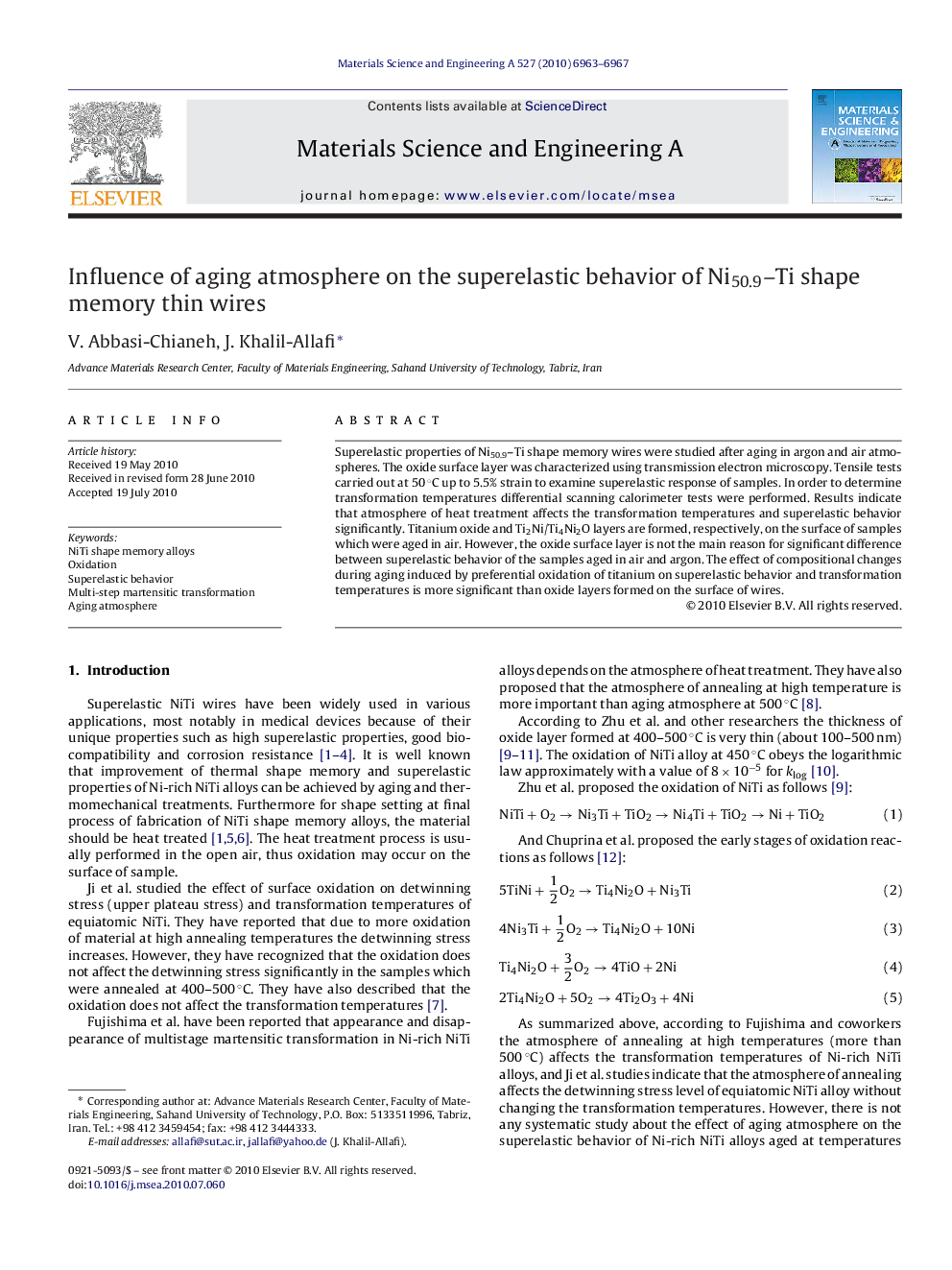| Article ID | Journal | Published Year | Pages | File Type |
|---|---|---|---|---|
| 1579871 | Materials Science and Engineering: A | 2010 | 5 Pages |
Superelastic properties of Ni50.9–Ti shape memory wires were studied after aging in argon and air atmospheres. The oxide surface layer was characterized using transmission electron microscopy. Tensile tests carried out at 50 °C up to 5.5% strain to examine superelastic response of samples. In order to determine transformation temperatures differential scanning calorimeter tests were performed. Results indicate that atmosphere of heat treatment affects the transformation temperatures and superelastic behavior significantly. Titanium oxide and Ti2Ni/Ti4Ni2O layers are formed, respectively, on the surface of samples which were aged in air. However, the oxide surface layer is not the main reason for significant difference between superelastic behavior of the samples aged in air and argon. The effect of compositional changes during aging induced by preferential oxidation of titanium on superelastic behavior and transformation temperatures is more significant than oxide layers formed on the surface of wires.
Research highlights▶ Atmosphere of aging at 450̊C has a great effect on superelasticity of NiTi wires. ▶ Oxide layers are not main reason for different superelastic behavior of NiTi wires. ▶ Compositional changes due to oxidation have a significant effect on superelasticity. ▶ Non-homogenous composition changes the sequence and temperature of transformations.
